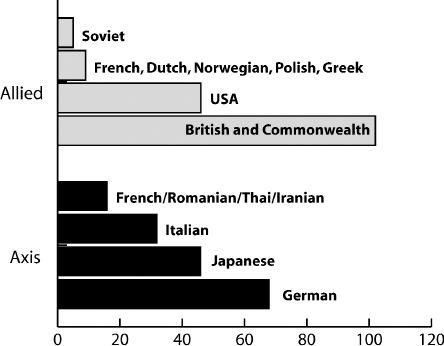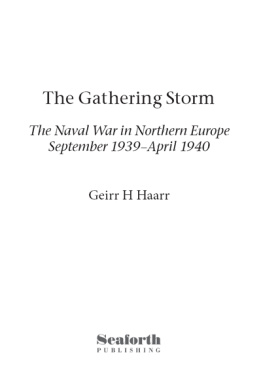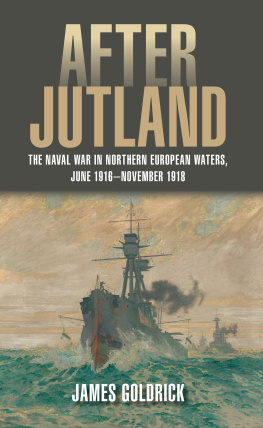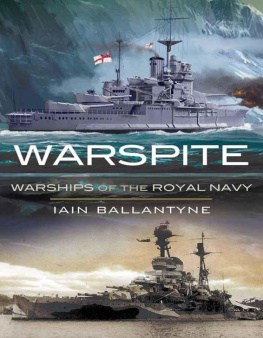The
GERMAN
FLEET at
WAR,
19391945
The
GERMAN
FLEET at
WAR,
19391945
VINCENT P. OHARA
Naval Institute Press
Annapolis, Maryland
The latest edition of this work has been brought to publication with the generous assistance of Marguerite and Gerry Lenfest.
Naval Institute Press
291 Wood Road
Annapolis, MD 21402
2004 by Vincent P. OHara
All rights reserved. No part of this book may be reproduced or utilized in any form or by any means, electronic or mechanical, including photocopying and recording, or by any information storage and retrieval system, without permission in writing from the publisher.
First Naval Institute Press paperback edition published 2011.
ISBN 978-1-61251-397-3 (eBook)
The Library of Congress has catalogued the hardcover edition as follows:
OHara, Vincent P.
The German fleet at war, 19391945 / Vincent P. OHara
p. cm.
Includes bibliographical references and index.
1. Germany. KriegsmarineHistoryWorld War, 19391945. 2. World War, 19391945Naval operations, German. I. Title.
D770.O38 2004
940.545dc22
2004012716
 Print editions meet the requirements of ANSI/NISO z39.48-1992 (Permanence of Paper).
Print editions meet the requirements of ANSI/NISO z39.48-1992 (Permanence of Paper).
9 8 7 6 5 4 3 2 1
CONTENTS
In naval warfare, success and failure are only a hairline apart. A wrong decision or one a minute late, the wrong interpretation of a message, a bad change in the weather, an unfortunate hitany of these can change victory into defeat in a twinkling.
GROSSADMIRAL ERICH RAEDER
J UST BEFORE MIDNIGHT on 11 January 1945 off Norways southwest coast a German convoy carrying coal and foodstuffs received word of British warships in the vicinity. The lookouts aboard M273 focused their attention to port, toward the open sea from where danger seemed most likely to come. But the sudden twinkling of red lights appeared from dead ahead. There was a low whistling sound followed immediately by a muffled pop as the sky overhead exploded in harsh, yellow light. This scenelarge German warships engaged with large enemy warshipsoccurred sixty-nine times during the Second World War. In a few cases involving famous ships like Bismarck, Graf Spee, or Scharnhorst, the details of the ensuing action are well known, but most of the surface battles the German navy fought have been relegated to asides or forgotten altogether.
Sea battles are a consequence of the tasks a navy faces during war. One task of the German navy was to disrupt Great Britains trade and maritime lines of communication; for this the navy used submarines supported by surface warships. The navy also had vital trade routes to protect. It had to deny or dispute the Allies ability to project power over the open seas and to protect the flanks of Fortress Europa; and occasionally the navy had to undertake power projections of its own. For these jobs the principal tools were surface warships. And, except for the brief Polish campaign, the fleet But despite the naval staffs strategy, despite fuel shortages and inferior numbers, large warships of the German navy fought more sea battles than the Italian navy. They fought more than the Japanese navy. They even fought more than the United States Navy. This book is about these battles.
The details of these battles, both famous and forgotten, are interesting in themselves for illustrating how designs, doctrine, and leadership withstood the stress of combat. I unexpectedly discovered that the details fit together like a jigsaw puzzle to reveal a bigger picture. They reveal how the navy, its men, and its opponents evolved through six long years of warfare. They reveal that the German navys war was not just a U-boat war, that the surface fleet was much more than a few doomed battleships. They reveal that the navys contribution to Germanys war effort was greater and more crucial to her hopes for victory and later her survival than is commonly realized.
In this work I use the terms surface engagement, surface action, or sea battle interchangeably. They refer to an encounter between purpose-built surface warships displacing at least five hundred tons full load (which is how I define a large warship) where torpedoes and/or gunfire were exchanged. This definition excludes the many actions involving motor-torpedo boats, auxiliaries, and armed merchant cruisers or raiders where either opponent had only such ships engaged.
The German Fleet at War, 19391945 details each of the sixty-nine engagements fought by the German navy. A table summarizes the engagements discussed in each chapter. A header outlining the combat conditions and a brief background of the battle generally precedes each narrative. A table lists the participants, their nationality, the size, speed, and armament of the ships involved and damage suffered, if any. The reader is referred to the Appendix for a more detailed explanation of these matters. Finally, each chapter contains a map identifying the engagements location and important geographic features in the vicinity or referenced in the narrative.
Language is standardized in the interest of precision. Instead of Kriegsmarine, Royal Navy, or Polska Marynarka Wojenna, the book refers to these services as the German navy, British navy, and Polish navy. German ranks, however, remain in German because several have no English equivalent and because British and American ranks are not exactly equal. Similarly, The German Fleet at War retains German abbreviations for certain classes of warships: S-boat instead of motor-torpedo boat or E-boat, V-boat instead of patrol boat, and UJ-boat instead of subchaser or corvette. This is done because the English term is associated with the British navy ship types and does not necessarily describe the German equivalent. This book uses the English system of measurement with metric distances converted to yards and generally rounded off. The word miles always refers to nautical miles. The subject of this book is large; every effort has been made to present accurate information in an objective fashion. In cases where secondary sources disagree, I follow what I believe to be the most likely or reliable version.

Figure 1: Naval Surface Engagements (by coalition and predominate participant)
Many people have supported my efforts to write The German Fleet at War. I would like to thank Vincent P. OHara Sr., for his careful scrutiny of the manuscript and Margaret OHara for her encouragement. Enrico Cernuschi generously shared his extensive knowledge and insightful criticisms. Pierre Hervieux and Peter M. Kreuzer patiently answered my nagging questions. Jeffrey Kacirk, my oldest friend, was first to help. I would like to acknowledge the cheerful assistance provided by the San Diego Maritime Museum Library, the Naval Historical Center in Washington, D.C., and the National Archives at College Park. To the editors and staff of the Naval Institute Press I give special thanks for their professionalism, responsiveness, and consistent help. They have all made this a better work. Of course, I retain responsibility for all opinions and errors of fact.









 Print editions meet the requirements of ANSI/NISO z39.48-1992 (Permanence of Paper).
Print editions meet the requirements of ANSI/NISO z39.48-1992 (Permanence of Paper).